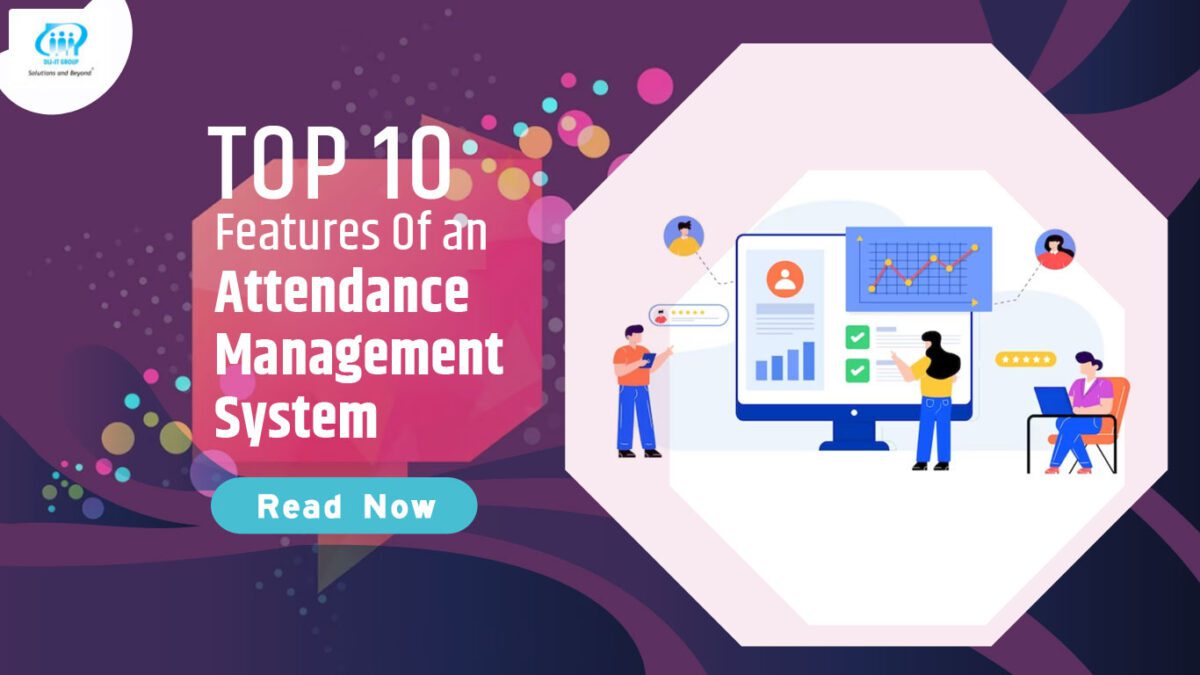The globe has become a little interconnected community in today’s fast-paced society, where technology and computers are helping humans become more and more efficient. Growing businesses are finding it difficult to track and control employee attendance, particularly given that many of them operate at different locations and value variety and a flexible work environment. Today’s HR professionals can’t live without their attendance management system. Attendance management solutions have the potential to reduce labour costs and increase employee attendance by automating routine tasks and offering clear insights into attendance data.
This article will show the 10 features of tools for managing attendance and how they might benefit HR specialists in their work.
-
Clocking-In and Out
Clocking in and out is a crucial component of a time attendance software. The ability to clock in, plan punch-in breaks, and clock out at the end of the workday should be provided to your employee. Either a biometric gadget or mobile application on their phones can be used for this.
-
Leave Management
Your attendance management system needs to cover this ground as well. The word “absent” shouldn’t be included in a missed day’s attendance record. Employees should be given the option to take a half-day and clock in accordingly or to request a leave instead.
-
Payroll Integration
Suppose your organisation uses an ATS with payroll integration. In that case, remuneration is computed according to the time the system logs, reconciling any leaves or half-days and streamlining the payroll management process. In addition to calculating your daily payroll, a varied ATS will also handle hourly pay and flexible payments.
-
Automated Communication
Any software used to manage attendance should be able to automatically and continuously interface with access control systems and time attendance systems. Your system should be sufficiently prepared to communicate with the devices, regardless of their location.
-
Integrating Biometric Devices
The efficiency and accuracy of the HRMS function can be greatly increased by integrating attendance management systems with biometric attendance machines, such as fingerprint scanners or facial recognition devices, to track employees’ clock-in and clock-out times.
With this integration, manual timekeeping is no longer needed, and the attendance records are accurate and unchangeable. In addition, buddy punching—where one person clocks in or out on behalf of another—which can be a serious issue with manual timekeeping and result in errors in attendance records and payroll calculations—may be prevented using biometric equipment.
-
Over-Time Tracking
The managers must note the commitment of employees to the organisation. Attendance Management Systems assess how much work workers perform over time, allowing managers to gauge employee dedication by determining who is willing to put in extra time and effort for the organisation. It makes it easier for managers to determine who is more deserving of promotion at the time of performance review.
-
Tracks Work Time
In order to make sure that the weekly scheduled hours are performed, businesses might monitor the actual work time of their employees. Based on this information, HR can adjust the company’s policies and procedures to preserve its employees’ physical and emotional well-being.
Consider the scenario where the data indicates that employees routinely put in more hours than they should. In that instance, it can be a sign that staff are feeling overworked and stressed out or that there are problems with task management. In order to increase employee happiness, this information can be utilised to change workloads or provide financial rewards like overtime pay.
-
Mobile and Cloud Support
Any device can access a cloud-based time attendance software. It also suggests a browser integration, which would allow the system to be accessed without the need to download an app. A mobile platform could also increase the productivity of field workers and remote employees by enabling precise attendance capture from any place.
-
Employee Self-Service
Thanks to employee self service, your attendance management system will never be the same. Your employees can now sit at their desks (on-site or remote) and log in using an app or browser rather than checking in at the office entrance. It is possible to self-comply, obtain leaves of absence, and modify attendance records without consulting HR or a manager.
-
Advanced Analytics
Advanced analytics-powered attendance management systems provide detailed visibility into attendance patterns, emphasising those who consistently work beyond or deviate from the scheduled hours. These kinds of actions can be appropriately identified and corrected to maintain optimal productivity levels in the workplace.
Systems for tracking attendance are a crucial resource for HR professionals nowadays. These HRMS capabilities from DLI-IT Group support HR professionals in their day-to-day tasks and in upholding corporate policy, adhering to regional labour laws and regulations, and gaining control and transparency over HR operations.
